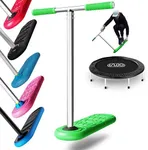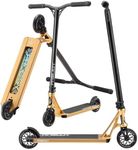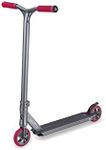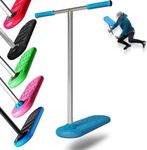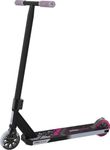Buying Guide for the Best Trick Scooters
Choosing the right trick scooter can greatly enhance your riding experience, whether you're a beginner or an experienced rider. Trick scooters, also known as stunt scooters, are designed to withstand the impacts and stresses of performing tricks and stunts. When selecting a trick scooter, it's important to consider several key specifications to ensure you get the best fit for your needs and skill level. Here are the key specs to look out for and how to navigate them.DeckThe deck is the platform where you stand on the scooter. It's important because it affects your balance and the ease of performing tricks. Decks come in various widths and lengths. A wider deck offers more stability, which is great for beginners, while a narrower deck allows for more agility, preferred by advanced riders. Choose a deck size that matches your foot size and riding style.
BarsThe bars are the handlebars of the scooter. They are crucial for control and maneuverability. Bars come in different heights and widths. Taller bars are better for taller riders, providing comfort and control, while shorter bars are suitable for shorter riders. The width of the bars should be about the same as your shoulder width for optimal control. Consider your height and riding style when choosing bar dimensions.
WheelsWheels affect the speed, smoothness, and durability of your ride. Trick scooter wheels are typically made of polyurethane and come in various sizes, usually ranging from 100mm to 125mm in diameter. Smaller wheels (100mm) are lighter and more maneuverable, ideal for technical tricks, while larger wheels (110mm-125mm) offer more speed and stability, suitable for ramps and park riding. Choose wheel size based on the type of tricks you plan to perform.
Compression SystemThe compression system holds the scooter together and affects the smoothness of your ride. There are several types, including HIC (Hidden Internal Compression), SCS (Standard Compression System), and IHC (Integrated Headset Compression). HIC is simple and reliable, great for beginners. SCS is more advanced, offering better durability and performance for experienced riders. IHC is lightweight and suitable for intermediate riders. Choose a compression system that matches your skill level and maintenance preference.
ForkThe fork connects the front wheel to the deck and bars. It's important for the scooter's strength and durability. Forks can be threaded or threadless. Threadless forks are stronger and more reliable, preferred by advanced riders, while threaded forks are simpler and suitable for beginners. Consider your riding intensity and skill level when choosing a fork type.
ClampThe clamp secures the bars to the fork. It plays a role in the stability and safety of your scooter. Clamps come in single, double, triple, or quad configurations, indicating the number of bolts. More bolts generally mean a stronger hold, which is important for aggressive riding. Beginners can start with a double clamp, while advanced riders might prefer a triple or quad clamp for extra security.
BrakeThe brake is essential for controlling your speed and stopping safely. Most trick scooters use a flex fender brake, which is simple and effective. The material and design of the brake can affect its performance. Metal brakes are durable and provide strong stopping power, while plastic brakes are lighter but may wear out faster. Choose a brake that offers reliable performance for your riding style.
